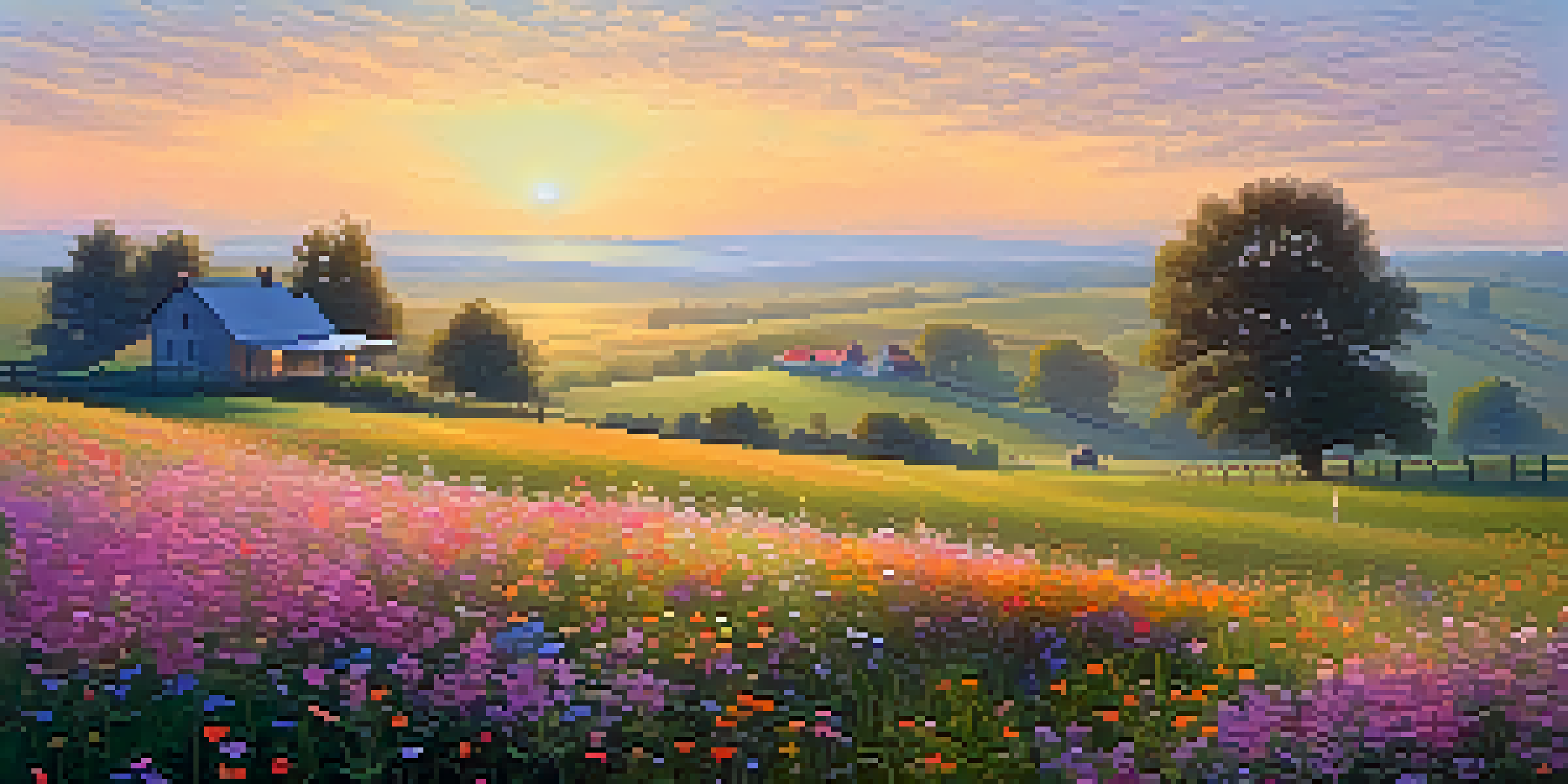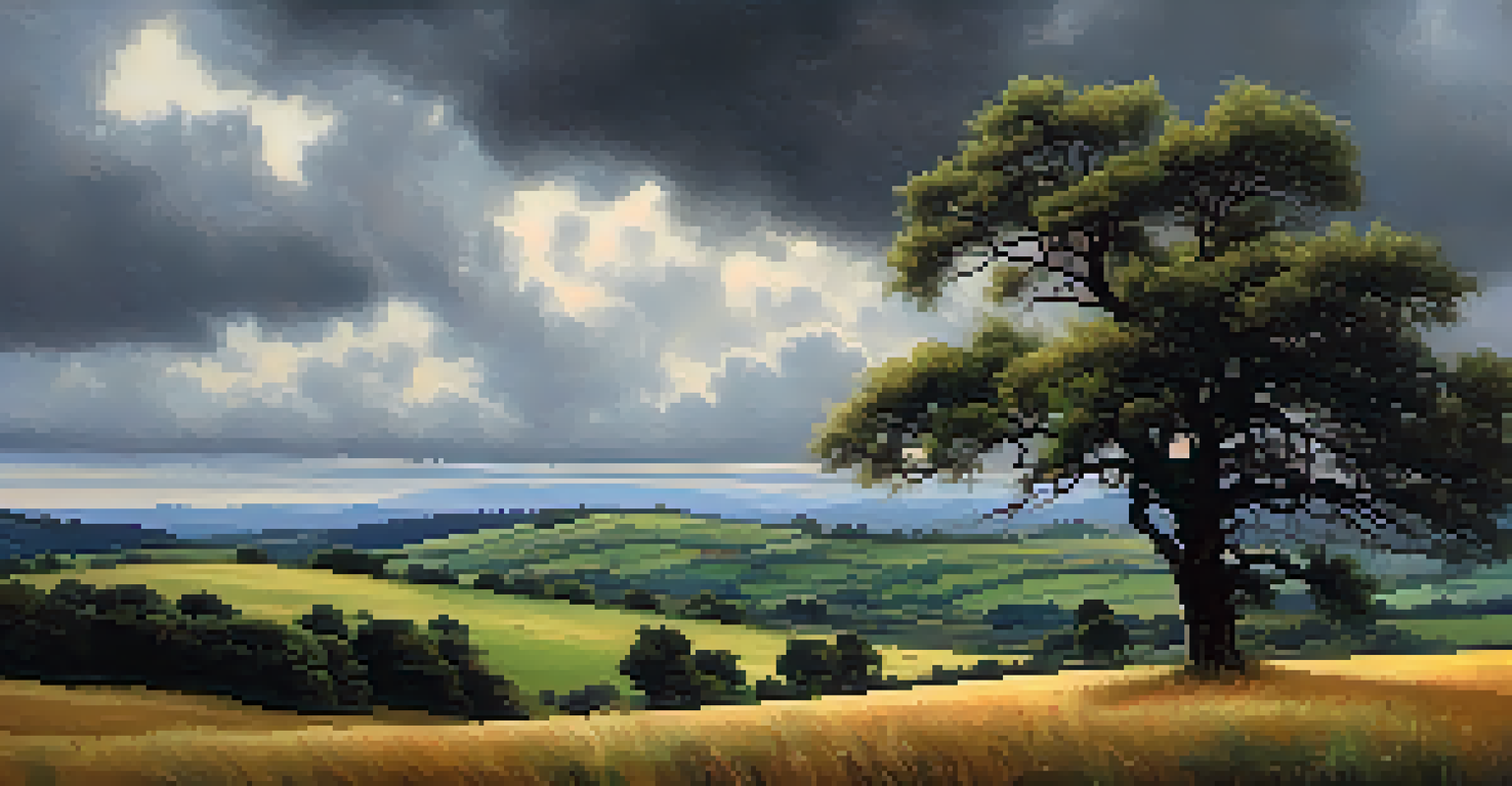Photography Tips for Capturing the Beauty of Rural Landscapes

Choose the Right Time of Day for Optimal Lighting
The golden hours—just after sunrise and before sunset—are often regarded as the best times for photography. During these times, the light is soft and warm, creating a magical atmosphere that can elevate your rural images significantly. For example, a field of wildflowers bathed in early morning light can look enchanting compared to harsh midday sun.
Photography is the story I fail to put into words.
Additionally, consider the weather conditions. Overcast days can produce softer shadows and enhance the colors of the landscape. This is particularly beneficial when capturing lush green fields or vibrant blooming flowers, as the colors pop without the distraction of contrasting highlights.
Lastly, don’t forget about the changing seasons. Each season offers a unique palette and mood, from the rich greens of spring to the warm autumn hues. Planning your shoot around these seasonal changes can add depth and variety to your photography portfolio.
Composition Techniques to Enhance Your Shots
Composition is crucial in photography; it’s all about how you arrange elements within your frame. One popular technique is the rule of thirds, where you imagine your image divided into a 3x3 grid and position key elements along these lines or at their intersections. For instance, placing a quaint farmhouse off-center can create a more interesting and balanced photo.

Leading lines are another powerful tool to draw the viewer's eye through the image. Whether it’s a winding dirt road or a fence line, these lines can guide the viewer's attention to the focal point of your landscape, making the image more engaging.
Optimal Lighting for Photography
The best lighting for rural photography occurs during the golden hours and on overcast days, enhancing the colors and mood of your images.
Lastly, don't shy away from experimenting with different angles and perspectives. Sometimes, a shot taken from a low angle can reveal details in the foreground that create a sense of depth and dimension, transforming an ordinary scene into something extraordinary.
Incorporate Foreground Elements for Depth
Adding foreground elements to your rural landscape shots can create a sense of depth and make your images more dynamic. For example, including wildflowers or rocks in the foreground can frame the scene and draw the viewer's eye deeper into the photograph. This technique adds layers to your image, making it feel more three-dimensional.
The best thing about a picture is that it never changes, even when the people in it do.
Moreover, foreground elements can provide context to your landscape, helping the viewer understand the scale of the scene. A close-up of a weathered fence post can enhance a vast field shot, emphasizing the immense space around it.
Experimenting with various focal lengths can also enhance foreground interest. A wider lens may allow you to capture more of the landscape while emphasizing the foreground, creating a compelling composition that invites viewers into your rural world.
Utilize Natural Frames to Focus Attention
Natural frames can effectively direct attention to your subject while adding context to your rural landscape photos. Trees, archways, or even hills can serve as natural frames, creating a vignette effect that emphasizes the beauty within. For instance, shooting through a cluster of branches can beautifully frame a distant farmhouse nestled among fields.
Using natural framing not only highlights your subject but also adds layers to your composition. This technique draws the viewer's eye towards the central focus, making the overall image more engaging and visually appealing.
Effective Composition Techniques
Utilizing techniques like the rule of thirds and natural framing can significantly enhance the visual appeal and depth of your landscape photos.
When searching for natural frames, keep an eye out for the environment around you. Look for unique elements that can enhance your composition and create a more immersive experience for your audience.
Experiment with Different Focal Lengths
The choice of focal length can significantly impact the feel of your rural landscapes. Wide-angle lenses are fantastic for capturing expansive scenes, allowing you to include more of the landscape and creating a sense of vastness. A sweeping vista of rolling hills can be more impactful with a wide lens, emphasizing the beauty of the open space.
On the other hand, using a telephoto lens can help you isolate specific elements in the landscape, such as a lone tree on a hilltop or distant mountains. This approach can create a sense of intimacy in your images, making them feel more personal and connected.
Ultimately, experimenting with various focal lengths can yield diverse results, so don’t hesitate to switch it up. Each lens offers a unique perspective that can transform your photography and showcase the rural landscape in new ways.
Pay Attention to the Sky and Weather Conditions
The sky can dramatically influence the mood and storytelling of your rural landscape photographs. A clear blue sky may evoke feelings of serenity, while dramatic storm clouds can create a sense of tension and anticipation. Being mindful of the sky can help you capture the essence of the moment you're trying to convey.
Clouds can add texture and visual interest to your shots, acting as a natural backdrop for your landscapes. They can also diffuse sunlight, leading to more balanced lighting conditions that enhance the overall quality of your images.
Experiment with Focal Lengths
Varying your focal lengths can dramatically change the perspective and intimacy of your images, allowing for a fresh take on rural landscapes.
Don’t be afraid to include more of the sky in your composition, especially during sunrise or sunset. A colorful sky can complement your rural landscape beautifully, creating a harmonious balance that captivates viewers.
Post-Processing Tips for Enhancing Your Images
Post-processing is where the magic often happens, allowing you to enhance the beauty of your rural landscapes even further. Basic adjustments like brightness, contrast, and saturation can make a significant difference in bringing your images to life. For instance, increasing the contrast can help your subject stand out against a softer background.
Consider using editing software to fine-tune specific areas of your image, drawing attention to elements you want to highlight. This could mean brightening a foreground flower or sharpening the details of a distant mountain range.

Finally, don't forget about cropping! A well-thought-out crop can improve composition and remove distractions, ensuring your rural landscapes are as impactful as possible.